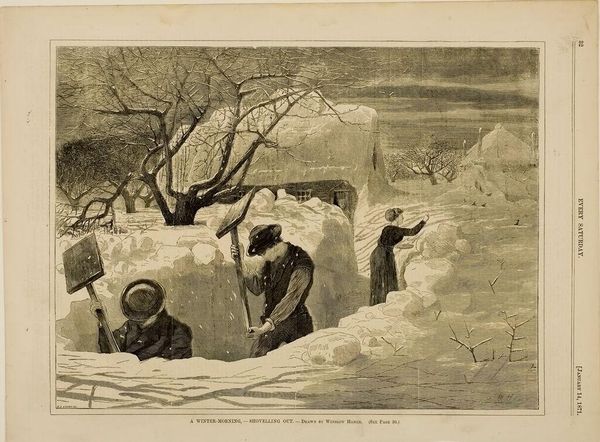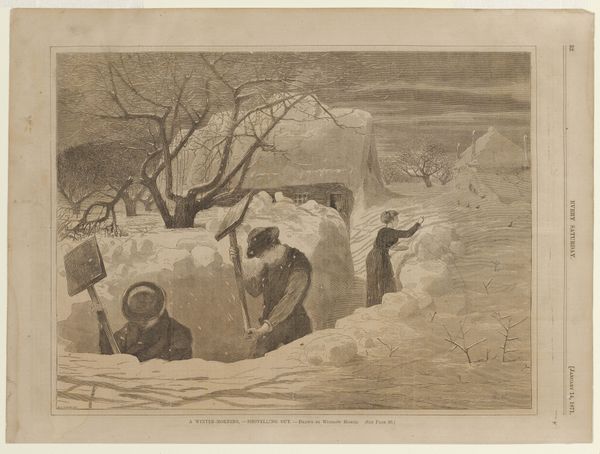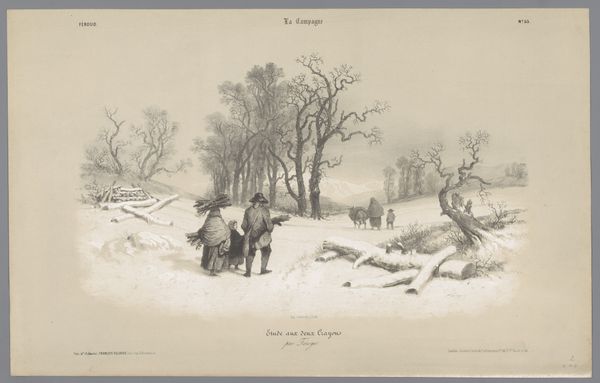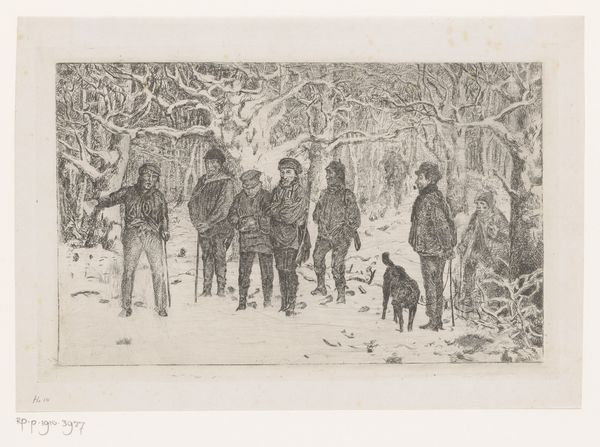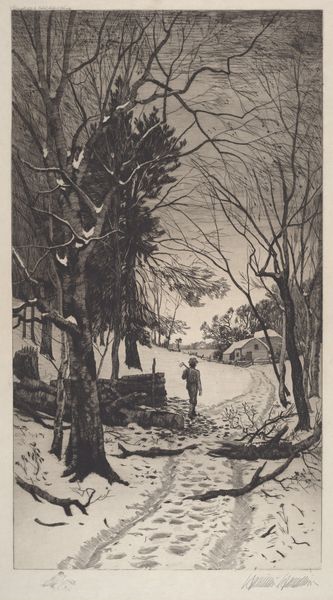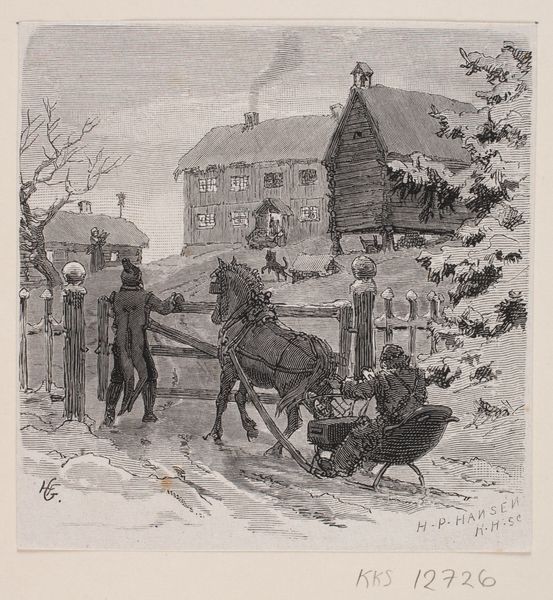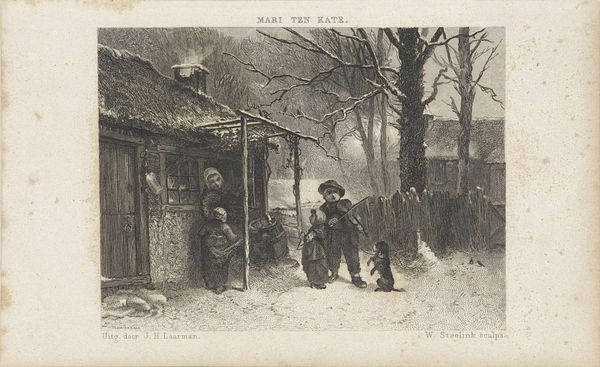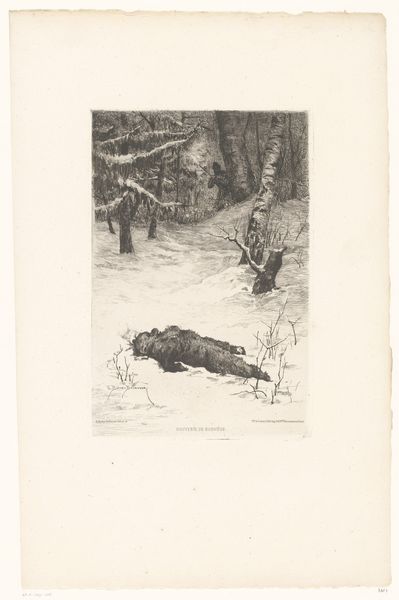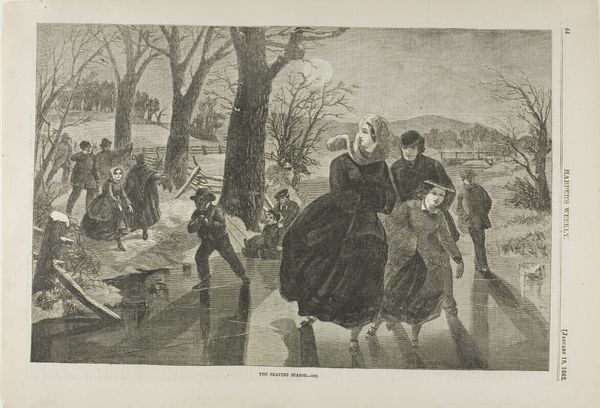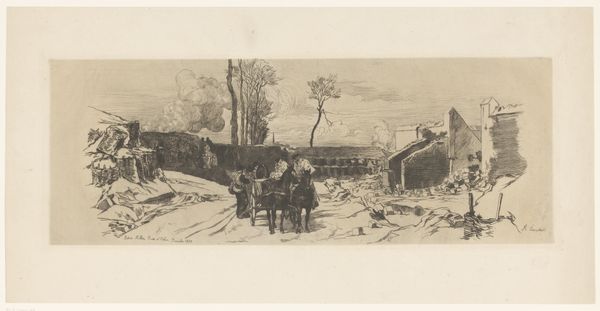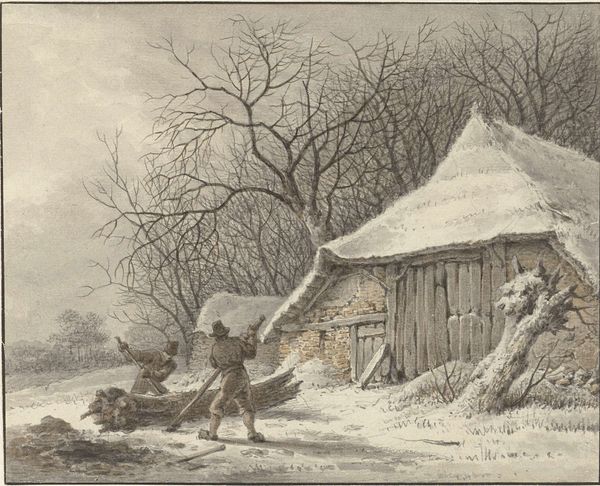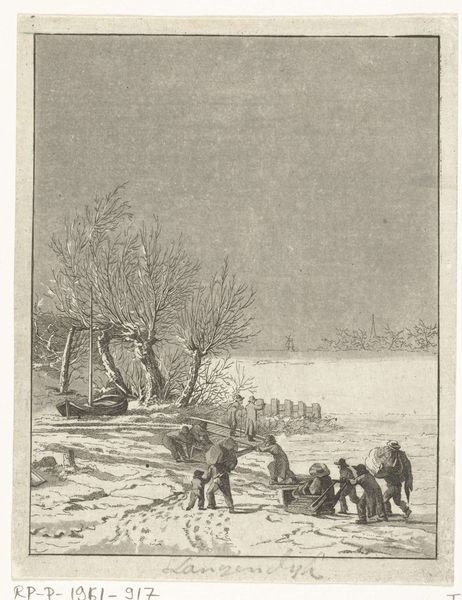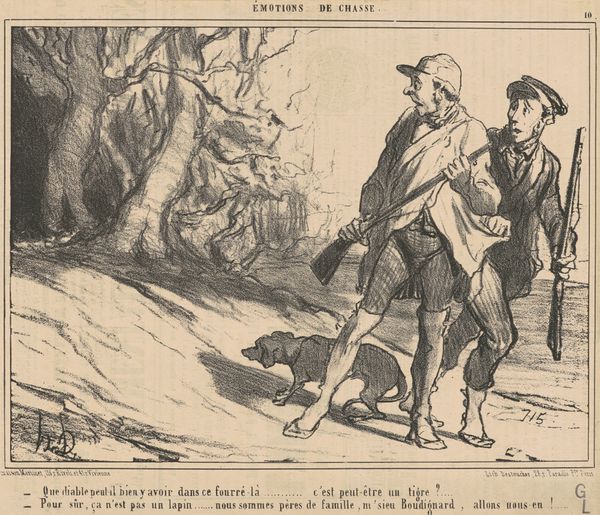
A Winter Morning – Shovelling Out (Every Saturday, Vol. II, New Series) 1871
0:00
0:00
drawing, print
#
pencil drawn
#
drawing
#
snow
#
amateur sketch
#
light pencil work
#
shading to add clarity
# print
#
pencil sketch
#
old engraving style
#
winter
#
house
#
pencil drawing
#
pen-ink sketch
#
men
#
pencil work
#
remaining negative space
Dimensions: image: 8 7/8 x 11 3/4 in. (22.5 x 29.8 cm) block: 9 1/8 x 12 1/16 in. (23.2 x 30.6 cm) sheet: 10 11/16 x 14 5/8 in. (27.1 x 37.1 cm)
Copyright: Public Domain
Editor: This print, "A Winter Morning – Shovelling Out," created by Winslow Homer in 1871, gives such a stark and clear-eyed vision of winter labor. It's from a publication called *Every Saturday*. What strikes you about this work? Curator: It's fascinating to consider how images like this functioned in the 19th century. These prints, published in magazines, brought visual information about daily life to a wide audience. Homer, in particular, focused on the experiences of ordinary people. Note the contrast between the seemingly romantic title, "A Winter Morning," and the blunt depiction of shovelling snow, essential but grueling labor. It’s interesting, isn’t it, how Homer juxtaposes idyllic expectations with everyday realities? Editor: Yes, it is. Was there a specific purpose or agenda driving these types of illustrations beyond just documenting daily life? Curator: Certainly. Consider the historical context: post-Civil War America, undergoing rapid industrialization and urbanization. There was a strong interest in representing "authentic" American experiences. These images served to define and solidify national identity. By showing rural labor, and the resilience of everyday Americans against harsh weather, illustrations helped to build a sense of shared identity and common values. Editor: So, it's less about individual artistry and more about serving a social and political function. But were they, and Homer specifically, just documenting the elite understanding of the "authentic" America? Curator: Exactly. While Homer's work can be celebrated for capturing aspects of daily life, we also need to think critically about who is being represented and how. It can be asked, whose narrative of American identity and social value is being promoted, and whose story is ignored? Even seemingly straightforward depictions contain inherent biases. Editor: That's really helpful; thank you. I'll definitely keep that in mind when looking at art from this period. Curator: It is critical that all images be read from a historical context in which their true value lies.
Comments
No comments
Be the first to comment and join the conversation on the ultimate creative platform.
